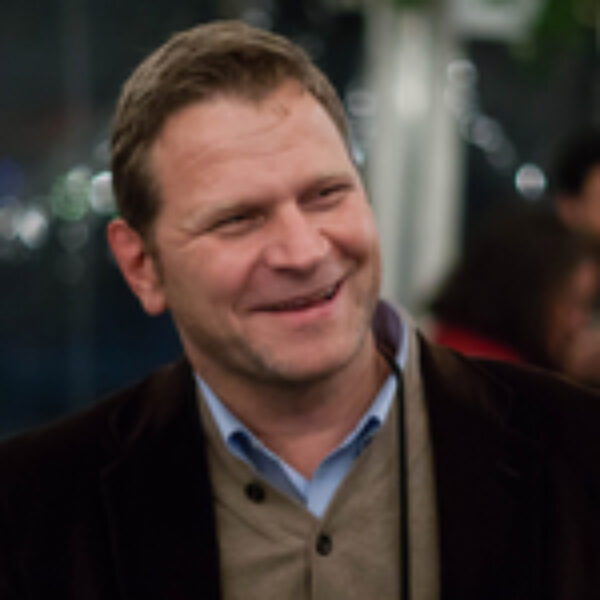A World Through the Hands (Video)
“Our destiny is written in the hand.”
—Renate Hiller, co-director of the Fiber Craft Studio at the Threefold Educational Center in Chestnut Ridge, New York
Practicing mindfulness. Paying attention. Listening generously.
For Renate Hiller, the fiber artist whom you see in the film above, these majestic phrases apply in all their richness. Her German lilt of the tongue reaffirms this exquisite eloquence as she connects the importance of using our hands with the way in which we understand and find value in ourselves and in others. There’s something so honest and pure about her thought — that we gain a deeper, more meaningful relationship with our own humanity and our greater world by using our hands.
Using our hands grounds us — in work and in relationship. As we create something, hopefully beautiful, with our hands, we are transforming our moral and social senses. We evolve; we change. We notice things that we passed over the day before: the curve in a sidewalk to make way for a tree in the boulevard, the purl of a scarf, the transition of a capital that greets the ceiling. We observe the mundane and see it anew. The process of creating through the hands becomes a spiritual practice.
Ms. Heller strings together so many “threads” that help me think about raising children; about living a fuller, more physically experiential work life (yes, even about writing marginalia in a script rather than using the track changes option in Word); about hearing differently the many stories from folks who write in to the program, especially the passionate accounts of people and their gardens.
She also reminds me of something Joanna Macy told Krista in a recent interview (show to be released on September 16th):
“I’m looking at my hand right now as we talk. It’s got a lot of wrinkles ‘cause I’m 81 years old. But it’s linked to hands like this back through the ages. This hand was shaped by when it was a fin in the mother seas, where life was born. This hand is directly linked to hands that learned to reach and grasp and climb and push up on dry land and weave reeds into baskets. It has a fantastic history. Every particle and every atom in this hand goes back to the first — what Thomas Berry calls ‘the primal flaring forth,’ the beginning of space-time. We’re part of that story.”
And, for those who are unable to watch the video, here’s a transcript:
I’m spinning wool with a stone spindle. This tool has been used probably for more than 30,000 years. And when we twist fibers into yarn we are actually creating a spiral. And the spiral is a cosmic gesture of creation.
When we look at our galaxy from outer space it is a spiral. And we find spirals in many, many places — in the plant world — on the back of our head we have a spiral. So, this is an activity that brings us closer to the cosmos, you could say. But at the same time we create something that is useful and beautiful because with the yarn that we have spun we can create sweaters, hats and mittens and scarves and so on.To have the skill of knitting, to have the skill of crocheting, of felting, makes it possible for us not only to make something but it makes us skilled in general. The use of the hands is vital for the human being, for having flexibility, dexterity. In a way the entire human being is in the in the hands. Our destiny is written in the hand. And what do we do in our modern world with our hands? You know we move the mouse, we drive and so on. We feel plastic most of the time. The hands are relegated to very little that’s actually bringing dexterity to our times. So we have come ever more estranged from nature and from also what other human beings are doing. The whole social element comes into play as well because if I make something then I think ‘Hmmm, how was that yarn made?’
In the past there were all the professions of the shoemaker and the tailor and so on, and that’s also being lost. If you do practical work somewhere on the school grounds, there is practical work going on. The children will all go to that. They’re really drawn to that. They want to experience it and however the reality is that there’s less and less of that. In the home, you know you can use already bought vegetables, all chopped up and ready to eat. There is very little activity like kneading the bread, and you know children grasp first an item and then they grasp with their mind. So if they have very little to grasp other than plastic readymade toys then what their mind grasps is very little. The toy automatically moves and you know children can only be kind of astonished by that.
So though there is this loss of understanding the value of things, of the meaning of things, and in handwork, in transforming nature we also make something truly unique that we have made with our hands, stitch by stitch, that maybe we have chosen the yarn, we have even spun the yarn — even better, and that we have designed. And when I do that, I feel whole. I feel I am experiencing my inner core because it’s a meditative process. You have to find your way; you have to listen with your whole being. And that is the schooling that we all need today. Because we’re so egocentric and this makes us think of what is needed by something else. So we are in a way practicing empathy — empathy with the material, empathy with the design. I think this practicing of empathy that we do in the fiber crafts is paramount for being healing to our world. And it’s a service for the divine that we are surrounded by.
(A special thanks to Dorit of the Gerðandisgleðir blog for making connections.)



Share your reflection